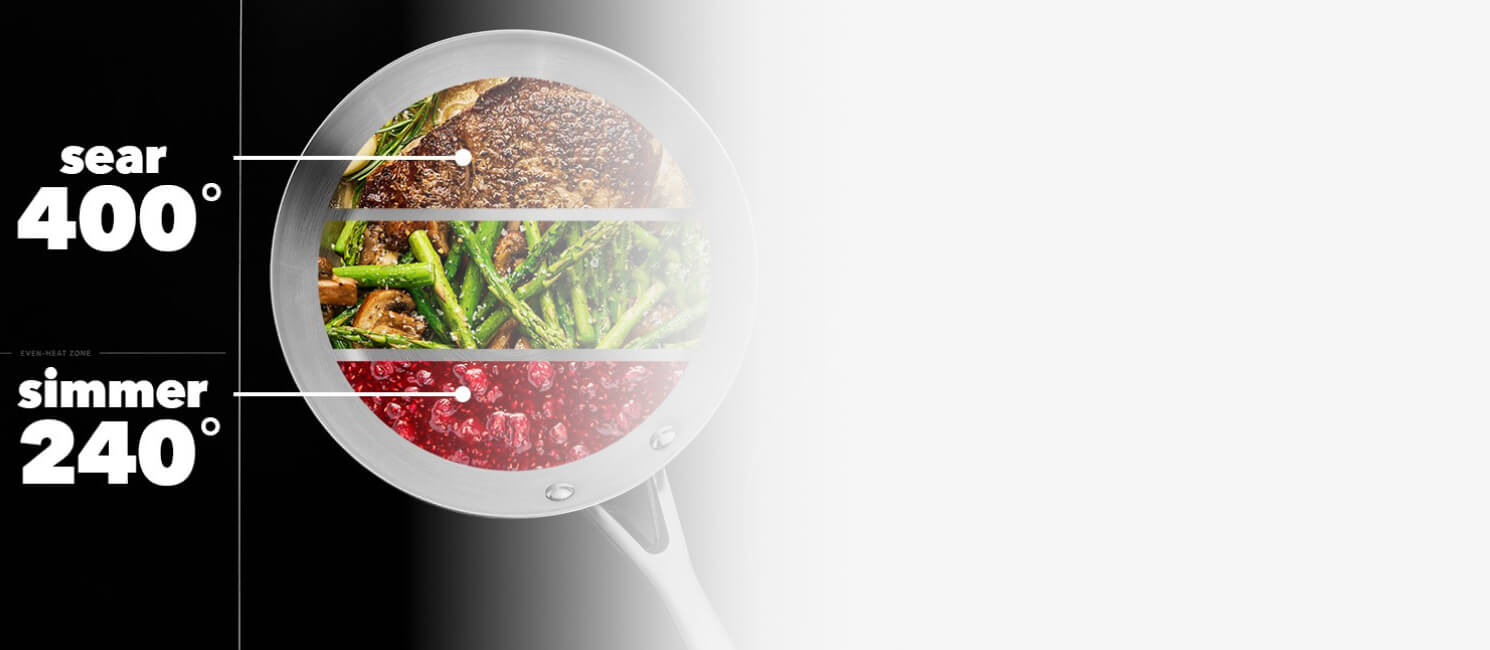
5 benefits of induction for everyday cooking
Induction cooktops and ranges have become increasingly popular in recent years, and you may be wondering if they’re worth all the hype. If you’re looking to upgrade your cooking space, use this guide to explore the benefits of induction cooking and help you decide if an induction cooktop or range is right for you.


Induction cooking: what is it & how does it work?
Induction cooking uses electromagnetic waves that turn compatible pots and pans into their own heat source. When you turn on an induction cooktop or range, a magnetic current flows through a copper coil beneath a ceramic glass surface, causing your cookware to heat up.

KitchenAid® Temp Cook™ Induction Technology
Take on your next ambitious recipe
This KitchenAid® induction cooktop with Temp Cook™ Induction Technology maintains the precise temperature that you set for precise control beyond standard high, medium and low settings
Why choose an induction cooktop?
There are several benefits to choosing induction cooking for your kitchen, like fast heating and cooling and easy-to-clean surfaces. Discover some of the benefits of induction cooktops and ranges below.

1. Fast heating
Induction transfers energy directly to compatible cookware, helping to prevent heat or energy loss between the cooking surface and your food. Whether you’re boiling water to cook homemade gnocchi or heating a frying pan to sear a tender steak, the quick heating time of induction cooking can often reduce the time you spend waiting for your cookware to come to temperature.

2. Temperature control
The direct heating style responds quickly to temperature adjustments, allowing you to quickly drop from a rolling boil to a gentle simmer.
Select KitchenAid® induction cooktops offer Temp Cook™ Induction Technology that lets you set an exact temperature from 120°F to 400°F for precise control beyond standard high, medium and low settings.

3. Cool cooking surface
Since induction technology transfers heat directly to your cookware, the cooking surface itself typically remains cooler and cools quickly once it’s turned off. That way, you don’t have to wait long before you’re able to clean the surface of any sauce splatters or pasta water spills once you’re finished creating.

4. Easy-to-clean surface
An added benefit of the quick-cooling surface is how easy it is to clean. Since the cooking surface doesn’t reach high temperatures, the messes of cooking aren’t as likely to get baked onto the surface, allowing you to simply wipe messes away.

5. Energy efficiency
Induction technology can be up to three times more energy-efficient than gas and 5-10% more efficient than electric radiant heating (according to ENERGY STAR®). Since induction turns your cookware into its own heating source, it helps prevent warmth from seeping into the room, which may also reduce the load on your home’s HVAC system.
1. When compared with cooktop with same heating technology at similar power output.


What to know before switching to induction
Induction cooking technology is very different from electric radiant or gas-powered heat. The rapid heating may take some getting used to, so you may need to monitor your food closely as it cooks to help prevent overcooking. You also won’t be able to use certain cooking techniques that require an open flame.
It’s also important to note that induction technology requires compatible cookware made from cast iron or other magnetic materials. Pots and pans made from copper, aluminum, glass or ceramic won’t be compatible.

Is induction cooking right for you?
Whether an induction cooktop or range is right for you depends on your cooking style and personal preferences. If you already have compatible cookware and want the combination of a sleek, easy-to-clean surface of an electric cooktop with the responsive control of a gas model, induction might be the right fit for your kitchen.
